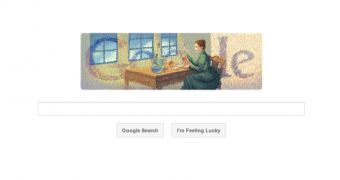Google is currently honoring multiple Nobel Prize laureate Marie Curie with a doodle celebrating her birthday, 144 years after the fact. Marie Skłodowska Curie, born Maria Salomea Skłodowska, was one the most influential scientists of the 20th century and was a pioneer as much in science as in getting women accepted and treated as equals in scientific research.
Her work centered around radioactivity, she discovered two radioactive elements, polonium and radium, for which she received her Nobel Price for Chemistry, but also laid the groundwork for research in radioactive elements and radioactivity, a term she coined, in general.
She was born in Poland but left to study in Paris at age 23. She worked to pay for her studies but eventually earned a degree in physics and one in mathematics, in 1893 and 1894 respectively.
It was then that she met her future husband Pierre Curie with whom she would share her first Nobel Prize. Propelled by the discovery of radioactivity in Uranium by Henri Becquerel, Marie Curie started work on researching the material.
Through her work, she proved that radioactivity was present at the atom level and that it was related directly to the amount of uranium present.
She found that some uranium minerals were much more active than uranium itself so she concluded that they must contain small traces of some substances that are many times more radioactive that uranium.
This is what led to her discovery of both polonium, which she named after her native Poland, and radium, which she named after radioactivity.
In 1903, she received a Nobel Prize in Physics, along with her husband and Henri Becquerel, for their work in researching radiation. She became the first woman to win a Nobel Prize.
In 1911, she was awarded a Nobel Prize in Chemistry for her discovery of polonium and radium. She became the first person to win two Nobel Prizes in different fields and is the only one of two people to hold this honor. She is also the only person to hold a Nobel Prize in two different science fields.
Tragically, she died in 1934 due to the effects of long term radiation exposure, the perils of which, understandably, were not know at the time.
Her early research papers are even now too radioactive to be handled without protective gear. In 1995 she became the first and only woman to be inducted to the Panthéon in Paris on her own merits. Her husband was also included.

 14 DAY TRIAL //
14 DAY TRIAL //